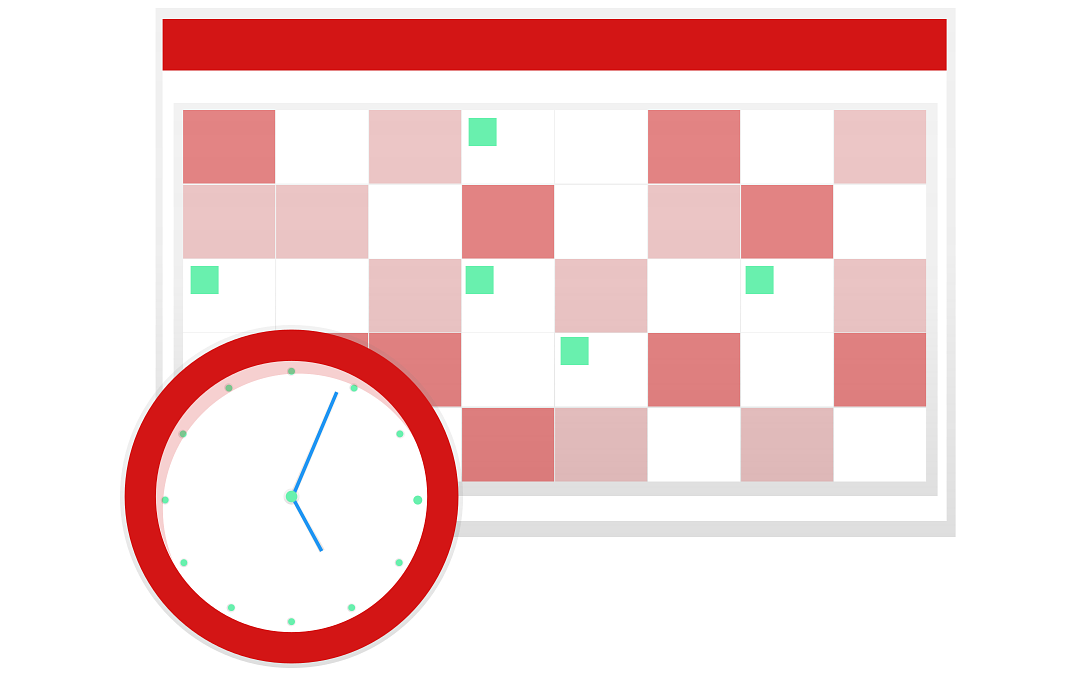
Aug 8, 2018 | PTAC Units
When to Trade Out Your PTACs
How long do PTACs really last? The average lifespan of a PTAC unit is about seven years—ten years if it is maintained well. Unfortunately, most hotel owners wait longer than that to trade out their PTACs, especially if their old units still seem to get the job done.
Operating outdated PTAC units can cause problems, not to mention lead to more maintenance headaches and higher utility bills. Even though there’s no definitive guideline for replacing PTAC units, your old units will begin to show three tell-tale signs as they near the end of their life cycle.
Sign #1: The unit is not as efficient as it once was.
Newer PTAC models are known for their energy efficiency, and they can be retrofitted to replace older models. That’s why buying an updated model is usually a more energy-efficient choice than buying the old, identical model.
Pay close attention to the Energy Efficiency Ratio (EER rating). The EER rating measures how efficiently the unit converts electricity into output energy. This article from Green Lodging News compares the EER ratings of a new unit and a ten-year-old unit. When new, the unit’s EER rating hovers around 5.0, but as the years go by, it’s typical for the EER rating to drop to 3.0.
If the EER of your PTAC units has dropped, then it’s time to invest in newer units with an EER of 10 or higher. Because they use less energy, new units offer the double benefit of being an eco-friendly choice and saving hotel owners on utility bills. They eventually pay for themselves!
Sign #2: The unit is not EPA compliant.
The majority of units do well by EPA standards. But if yours is ancient or hasn’t been properly maintained with environmentally friendly coolant, there’s a chance you may be in danger of no longer being compliant or of harming the environment.
Currently, R-22 coolant, commonly known as freon, is being phased out of production. There is no need for concern, however. There is enough freon already produced to supply running PTACs for decades to come, and PTACs that use freon can use an alternative eco-friendly coolant instead.
However, it’s always a good idea to be as environmentally friendly as possible. We can make sure all previous coolant is properly disposed of for you and that your new or refurbished PTACs are earth friendly.
Sign #3: The unit makes excessive noise.
Some PTAC units are noisier than others, but older units can be especially prone to squeaks, whistles, and rattles. And what’s the number one thing that guests seem to complain about? Loud, malfunctioning air conditioners.
By investing in a quieter unit, perhaps with a dual fan system, you can accommodate sensitive guests, receive fewer complaints, and lose less revenue to refund requests.
Hoteliers often don’t realize they have loud units until a guest complains or leaves a negative review on TripAdvisor. If you are receiving repeated complaints of temperature extremes, of poor air circulation or quality, or of broken, noisy, or inefficient air conditioners, then replacing your PTACs is a reliable way to keep guests happy. After all, PTAC units are an essential part of a positive, comfortable experience.
If you have any questions about the quietest, most energy-efficient, or most reliable PTACs, email us at info@ptaccrew.com or call (888) 458-PTAC. We sell all the major brands and can offer unbiased advice.

Jul 30, 2018 | PTAC Units
An analysis of hotel cancellation rates over 500,000 bookings revealed that the average percentage of cancellations hovers around 24%. This means that in order to be accurate, a hotel owner’s calculations of future revenue should include a 24% reduction due to cancellations. And the odds of cancellation increase even further if a site like Booking.com or Expedia is used to make the reservation. Ouch.
The rise of online and indirect booking engines has made cancellation very easy. Net Affinity, which provides a booking engine to independent hoteliers, published an interesting statistic back in 2015: 20.7% of their total bookings were completed on mobile devices.
This quote from Lisa Gevelber, Google’s VP of global marketing, describes the way technology has transformed the ways in which we make decisions about money:
“In a 15-minute walk with a smartphone, I did what used to take hours of research in front of a desktop computer. And the reason I was able to do this so seamlessly was because when I searched, brands were there to meet me in my moment of need.”
When you consider how easy it is for prospective customers to do research, read reviews, book a room, and cancel a booking, it’s no wonder that cancellation rates have risen across the board. But that’s not to say that hotel owners are powerless to reverse the trend.
Here are two ways you can reduce the odds of a refund request and protect your profits.
1. Create a guest-centered culture.
The secret to fewer complaints, fewer refund requests, and positive reviews lies in your hotel’s culture. It may seem like hotels are inevitably customer centric, but in a world of online reviews and constant media exposure, the average guest has become both more difficult to satisfy and more apt to complain publicly.
A hotel is not just a service; it is an experience. Switzerland-based C3 Centricity specializes in customer service training, and in this blog post, consultant Denyse Drummond-Dunn explains that the focus of hospitality services must shift from return on investment (ROI) to return on relationships (ROR).
ROR involves engaging with customers to better understand what they like and how your hotel can create a more positive experience and build stronger relationships with your target audience.
This engagement revolves around dialogue in which the customer is actively involved. That’s right: Your customers can help shape their hotel experience. In fact, many customers know exactly what they are looking for and will do their research to figure out whether or not you can deliver.
Today’s hotel guests will not only go the extra mile to find the best deal but they will also do everything in their power to ensure that they’re getting the most bang for their buck in terms of amenities and experience.
Drummond-Dunn goes on to explain that “having additional control in their lives today means that customers are re-evaluating what they are offered.”
In short, every customer interaction matters—even social media comments—and hoteliers should strive to respond quickly to such queries and complaints. Why? Because 42% of consumers expect a response within an hour.
2. Cultivate the experience.
You can focus on a wide spectrum of customer-centric practices—everything from small details like chocolates on pillows to bigger investments such as the most up-to-date PTAC units and property management technology. Everything from your curtains to your thermostats can and should demonstrate that you have the customer’s comfort and overall experience in mind.
Though it may be tempting to overlook things like energy management and temperature control when you’re shaping the customer experience, the truth is that every detail counts. Relationships die by a thousand paper cuts, and positive reviews are earned by a thousand tiny but positive impressions. Each small improvement you make to customer experience is an investment in the prevention of refund headaches.
For example, new PTAC units can pay for themselves quickly by turning a hot or moldy room into a pleasant place to relax and recharge.
Do not let the twenty-first-century, web-savvy customer intimidate you. Hoteliers still have the same goal: delivering the best possible experience at the greatest possible value. When you pursue this goal with customer-centric company culture at the forefront, your guests will notice and express their gratitude in the form of positive reviews.


